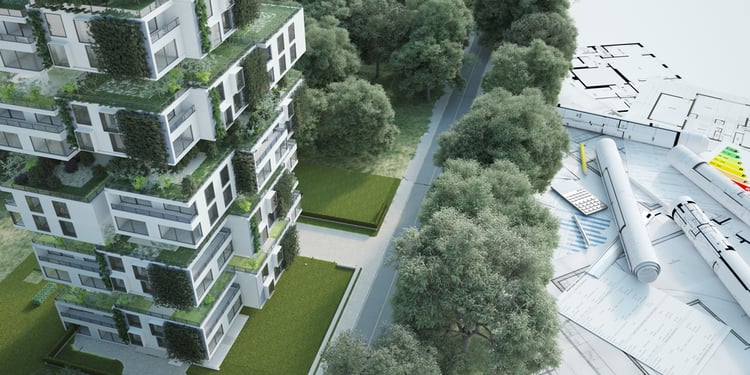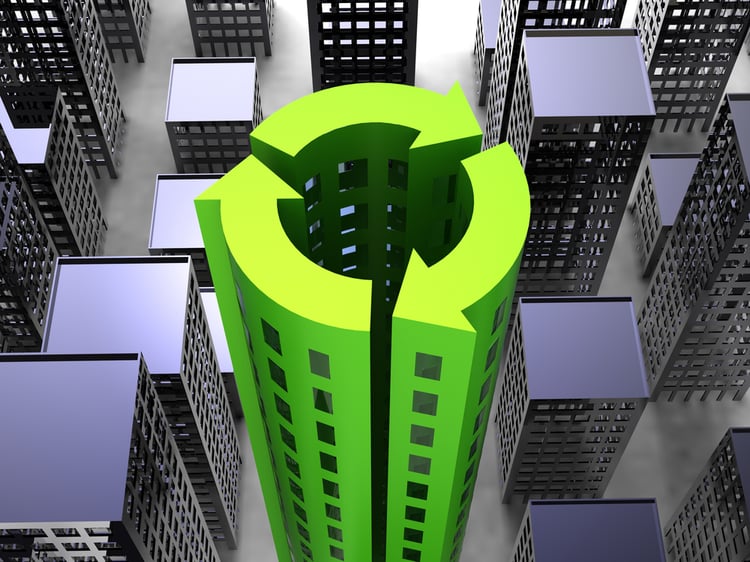Why Green Building Owners Should Be Rewarded Under Local Law 97

Local Law 97 has an emissions reduction target of 40% by 2030, which applies for New York City in general. The OneNYC strategic plan also has a more ambitious goal of carbon neutrality by 2050. These targets are for the entire city, but buildings are assigned individual emission limits based on their occupancy classification and square footage.
In theory, if all buildings reduce emissions below their respective limits, the citywide target will be achieved. This also means that green buildings, with annual emissions far below their limits, are doing extra work. Just like there are penalties for exceeding the LL97 emission limits, there could be rewards for building owners who go the extra mile.
Get a professional energy audit and identify the best measures to cut your building emissions.
One option to reward green building owners is by creating a performance-based incentive, which applies for every metric ton of avoided emissions. Another option is creating a carbon trading program, where building owners who exceed their limit can purchase credits from green building owners, offsetting part of their emissions.
Rewarding Green Building Owners with a Direct Incentive Program

Green design features increase the upfront cost of a construction project, but the savings achieved during the building’s lifetime are much higher. With an efficient design, owners can expect to save thousands of dollars in electricity and gas bills each year (or millions, depending on the project size). Green buildings also save on medical expenses, thanks to their superior indoor air quality - many health issues have been linked with poor ventilation and indoor air pollution.
An incentive program for green buildings would motivate more developers to invest in them, while helping NYC reach its carbon reduction targets. The incentive calculations could follow a similar procedure as the Local Law 97 penalties, but favoring building owners in this case:
- LL97 will apply a penalty of $268 per tCO2-e above the limit, starting from 2024.
- A similar rate could be defined for emissions below a certain threshold, and it would reward building owners instead.
The incentive could be calculated with building benchmarking data, just like the LL97 penalties. Green buildings are also subject to the benchmarking law, which means their energy consumption data is readily available for analysis. This would ensure that incentives are awarded for emission cuts that have already been achieved by a green building, and not based on design estimates only.
Rewarding Green Building Owners with a Carbon Trading Program

Green building owners can also be rewarded with a carbon trading program. In this case, instead of being paid a direct incentive from a government program, they are paid by other building owners who are trying to reach their respective emission limits. The end result would be similar for green buildings, but this approach also creates a benefit for other owners.
- Deep energy retrofits can greatly reduce the emissions from existing buildings, but their costs are difficult to predict.
- According to a study by the Rocky Mountain Institute, the cost of retrofits tends to fall between $25 and $150 per square foot.
- For buildings at the upper end of this range, reaching the emissions limit can be very expensive and challenging.
Some building owners may reach a point where further emission cuts have a prohibitive cost, and it makes more sense to purchase carbon credits from green buildings instead. This option does not exist with a direct incentive program - green buildings get their payments, properties above the limit pay their penalties, but there is no trading opportunity.
A carbon trading program would also create an incentive for current landlords to invest in green buildings. If they have any construction projects planned for the near future, they can use green design features to generate credits for their existing properties.
Conclusion
Green buildings owners are making an extra contribution towards the NYC decarbonization targets, and they should be rewarded for it. This can be accomplished with direct incentives, a carbon trading program, or a combination of both. These programs would also encourage real estate companies to invest more in green buildings.

Michael Tobias
Michael Tobias, the Founding Principal of NY Engineers, currently leads a team of 150+ MEP/FP engineers and has led over 4,000 projects in the US
Join 15,000+ Fellow Architects and Contractors
Get expert engineering tips straight to your inbox. Subscribe to the NY Engineers Blog below.

